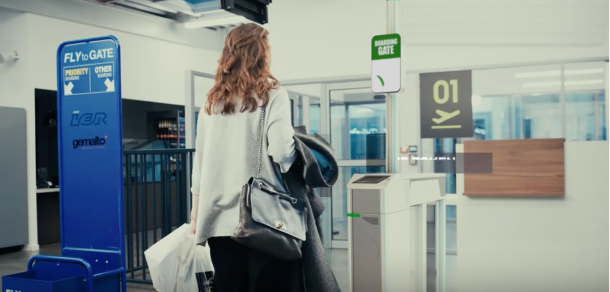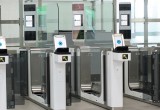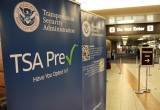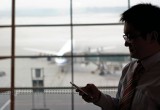Biometrics in airports define the future travel experience
Facial recognition to make lines and checkpoints a thing of the past
20 June, 2017
category: Biometrics, Transit
If predictions for the future of biometrics in airports hold true, a face would be the only thing a traveler would need to check-in for a flight, drop off bags, pass through security checkpoints and board a plane.
The entire process would be based on facial recognition biometrics, and technologists are already putting the pieces in place to incorporate that vision.
Global biometrics leader Gemalto has the technology that would make this scenario possible and is already implementing a biometric recognition system of this kind at airports in Paris to ease and secure passenger flow at border control. The goal of the biometrics system is to increase security, efficiency and speed for travelers.
Gemalto’s Fly to Gate offering enables travelers to create a biometric “token” either at home or at the airport and then use it with a passport to pass through self check-in terminals, baggage drops, security checks and boarding gates
“Biometrics in airports can be the single token that unlocks the future traveler experience,” says Neville Pattinson, senior vice president for government programs, North America, for Gemalto.
Earlier this year, Gemalto and IER, a developer of passenger technology, launched a biometrics-based, self-service travel offering dubbed Fly to Gate. The offering enables travelers to create a biometric “token” either at home or at the airport and then use it with a passport to pass through self check-in terminals, automated baggage drop points, security check access gates and boarding gates.
To begin the process, the traveler would scan a passport on either an airport kiosk or on a personal device like a tablet. The system would then verify that the traveler is the rightful owner of the passport by capturing a biometric reference image of the traveler to match against the scanned passport.
Once complete, this process creates a single biometric identity token that contains verified identity and boarding information. This token would eliminate the need for travelers to wait in line to drop off luggage or pass through security checkpoints when enabled by the airport. “The airport and airlines are able to seamlessly get you to your gate faster,” Pattinson says.
So for example, a traveler could use a biometric bag drop, instead of having to endure long waits at the bag check counter. “You can walk up, and since you’ve already had your imaged captured, you can present your face for validation. The biometric bag drop weighs and measures your luggage during the process.
Once the traveler boards the plane, the identity token is deleted.
Pattinson says the process would be simple enough to adhere to the comfort levels of various travelers, from the business traveler who is on the road Monday through Friday, to the occasional leisure traveler who gets on a plane once a year to go home for the holidays.
Fly to Gate is also able to integrate with immigration systems so that a person on an international flight would only need to present a passport at the border control gate and undergo facial recognition.
Initial demand for biometrics in airports
Paris is one of the latest airports to take advantage of the efficiencies of biometrics incorporating them into its immigration process. In November, Gemalto and IER were selected to provide automated border control gates at Charles de Gaulle and Orly airports. As of this spring, passengers will be able to start passing through new, faster e-gates with the use of only a passport and a fingerprint.




